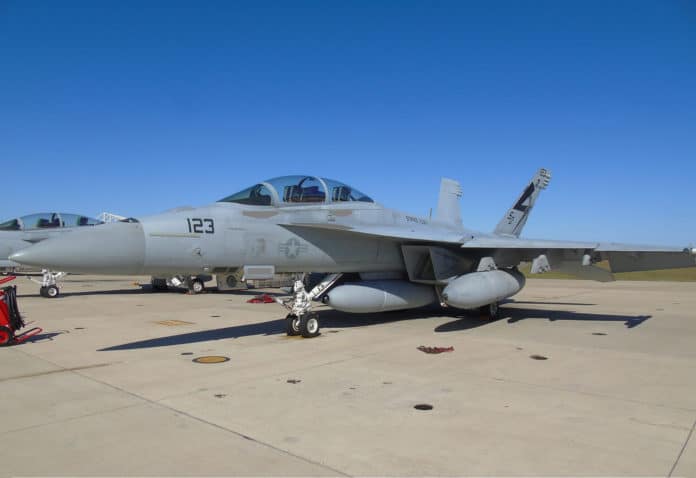Boeing and U.S. Navy have started flight testing of the Infrared Search & Track (IRST) Block II container in St. Louis. The U.S. Navy flew a Super Hornet F/A-18 tactical plane equipped with an Infrared Search & Track (IRST) Block II infrared module for the first time at the end of 2019, Boeing announced Wednesday.
The IRST Block II system developed by Lockheed Martin is a passive long-range sensor that incorporates infrared and other sensor technologies for highly accurate targeting. Block II sensor system is the critical part of the Block III updates that will be made to the Super Hornet, the company said.
The new Block III standard will include a longer lifespan, improved network capability, a greater range with compliant fuel tanks on the fuselage back, large displays in the cockpit, a reduced signature and an improved communication system. With the test flight of the IRST Block II that has begun, both Boeing and the U.S. Navy will be able to gather data on the system before it has been deployed since 2021.
Thus, the F/A-18 Super Hornet fighter will be able to act as discreetly as possible and, at the same time, more efficiently detect enemy fifth-generation fighter planes that a radar station cannot always detect. Overall, the IRST Block II is an important component of the F/A-18 Super Hornet.
The updated Super Hornet will carry 3,500 lb (1,600 kg) of additional fuel. Flight testing demonstrated CFTs could slightly reduce drag while expanding the combat range by 260 nautical miles (300 mi; 480 km). The prototype CFT (conformal fuel tanks) weighed 1,500 lb (680 kg), while production CFTs are expected to weigh 870 lb (390 kg).
This aircraft will be one of the main fighter planes of the American carrier-based aviation – along with the new F-35C.
